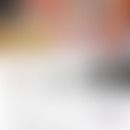Synonym(s)
HistoryThis section has been translated automatically.
DefinitionThis section has been translated automatically.
Very rare syndrome belonging to the group of ectodermal dysplasias with cysts of the apocrine glands along the edges of the eyelids, palmoplantar keratosis, hypotrichosis and hypodontia.
Furthermore, the following have been described, depending on the mutation: palmoplatar hyperkeratosis, nail dystrophies, hypoplastic mammilla, rosacea-like facial changes.
You might also be interested in
EtiopathogenesisThis section has been translated automatically.
Unknown. Autosomal recessive mode of inheritance. The syndrome is caused, similar to onto-oncho-dermal dysplasia (OODD; OMIM 277980), by a mutation of the WNT10A gene located on chromosome 2a35. The WNT10A gene plays an important role in the signalling pathways of the developmental processes of hair follicles, skin and tame morphology.
Differential diagnosisThis section has been translated automatically.
TherapyThis section has been translated automatically.
Progression/forecastThis section has been translated automatically.
LiteratureThis section has been translated automatically.
- Logan CY et al (2004) The Wnt signaling pathway in development and disease. Ann Rev Cell Dev Biol 20:781-810.
- Pauly KJ (2018) Schöpf-Schulz-Passarge syndrome associated with two new missense mutations of the WTNT10A gene. J Dtsch Dermatol Ges 16: 66-69
- Schöpf E et al (1971) Syndromes of cystic eyelids, palmo-plantar keratosis, hypodontia and hypotrichosis as a possible autosomal recessive trait. Birth Defects 8: 219-221
Outgoing links (4)
Keratosis palmoplantaris diffusa with mutations in cathepsin c; Keratosis palmoplantaris diffusa with mutations in KRT 9; Odonto-oncho-dermal dysplasia; Palmoplantar keratoses (overview);Disclaimer
Please ask your physician for a reliable diagnosis. This website is only meant as a reference.




